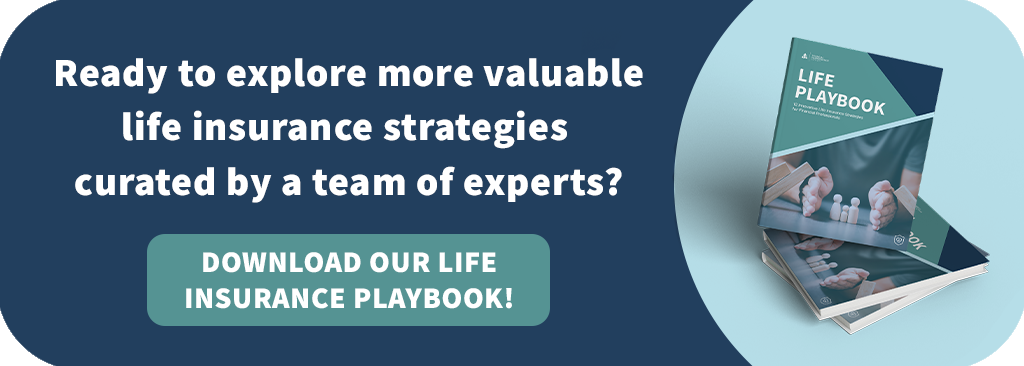Updated August 7, 2024, at 3:57 PM
As it evolves, the financial services industry continues to take a closer look at life insurance to bring awareness to the various products, carriers, tips, and tools that help you enhance client relationships, provide better solutions, and uncover new sales opportunities.
One such tool we’ve developed at FIG is our Comprehensive Analysis and Review (CAR) program to provide a thorough analysis of a client or prospect’s current life insurance portfolio.
We recently sat down with one of our residential life insurance experts, Case Design Analyst Chris Kite, and asked him a few questions about the importance of life insurance policy reviews and how our CAR program can help you and your clients find the best life insurance solution.
Check out the Q&A session below to understand why it’s always the perfect time to implement CAR in your practice.
1. Why do you believe life insurance isn’t reviewed by financial professionals on a more regular basis?
Information can be hard to gather and it’s often not clear on what policy options are or how they affect plans and projections.
Agent training and experience may not be sufficient for the products clients have. For example, if the agent sold the policy and projections for income, values, or benefit duration are less than as sold; that can turn into a difficult conversation.
2. What are a few things you see most consistently in your CAR review process?
I often see under-funded policies where what was intended to be permanent essentially became term insurance. What happens is the policy service hasn’t tracked the design as sold, and the client doesn’t know what changes or options would need to be made or reviewed. Clients’ needs change, particularly with income increases or a transition into retirement.
A few other common things I notice are:
- Credit rates can decrease compared to when the policy was sold
- Older policies may not have the features available in new products
- Policies have high-cost loans
3. Can you briefly explain some of the recent CAR program evolution over the past two years? What’s changed that our agents should know about?
We’ve improved our process of gathering and tracking information, as well as the report format and guides that explain policy options and dynamics.
We’ve also gained more experience working with carriers for both in-force and new policies. Not to mention, we’ve enhanced the tools we use to provide graphic comparisons of alternative policies and policy options along with easier access to full illustrations.
4. How easy is the CAR process and what are the basics required to conduct a review?
It’s a simple process. To get started, we’ll need all current policy statements, client goals, the client date of birth, and expected class for a new policy. We can help you evaluate potential underwriting.
Typically, we’ll need in-force illustrations based on client’s goals as well. Then, we’ll provide a standard authorization form along with a list of carriers who require unique forms or have different processes. Most carriers provide information within a week or two. Some take longer and are more difficult to work with.
Scheduling a call is the best way to be sure the goals, policy review, and alternatives are fully understood.
5. Is the CAR program for all life insurance types?
Yes. Some policies don’t provide illustrations due to their size or only having guaranteed elements. Reviews of small policies may be limited in scope but are still an important part of the review and discussion.
6. What should the FIG financial professional not expect when utilizing CAR?
They shouldn’t expect some concrete “answer” from FIG. The agent needs to make the decision on what to recommend to the client based on their assessment of the client’s goals and needs. We’ll assist the agent but won’t be able to decide for them.
Agents should also not expect a recommendation to transfer cash value without a proper review of product features, client goals, and product trade-offs.
7. Can you talk about some of the current—and maybe more importantly—the future technology impacts on CAR. Will it ever be fully automated?
Great question. For one, we’ve started to work with carrier feeds of in-force policies. We expect carriers will continue improving on providing needed information. Carriers are expected to improve in tracking information on policy design as sold, but few do so currently.
In terms of automation, much more could be computerized with simpler product designs, but many products are becoming more complex. The best opportunity to fully automate would be to work with carriers on improving policy statements and action options based on policy status—but we can’t guarantee anything.
8. What are a few life insurance review best practices you believe all financial professionals should adhere to?
I think three big ones right off the bat would be:
- Understand clients’ current needs and goals, particularly in the transition to retirement.
- Help show clients how to review annual statements and encourage them to do so.
- Be sure clients understand a range of results for non-guaranteed elements and policy options.
9. How should a financial professional introduce CAR to clients?
The easiest way is to utilize our process guide we can provide you that includes sample scripts and letters and explains the process for gathering information. A guide is also provided for life insurance concepts that facilitate discussions on how to meet client needs and goals.
10. How important is this for partners with influence, meaning estate and tax planning counselors?
These partners often have fiduciary responsibility for planning advice. With the complexity and flexible options of life insurance, balancing the policy components can be challenging.
Many policies intend to permanently lapse or will lapse with no value or with adverse tax consequences. These partners with influence will need to know how to manage policies for the long term.
Going Forward
The primary purpose of the CAR program is to provide you with the tools necessary to conduct a comprehensive client insurance policy review efficiently and effectively.
To learn more about this proprietary FIG program and how it can work for you and your clients, reach out to your private client group, or contact us here to get the conversation started today.


